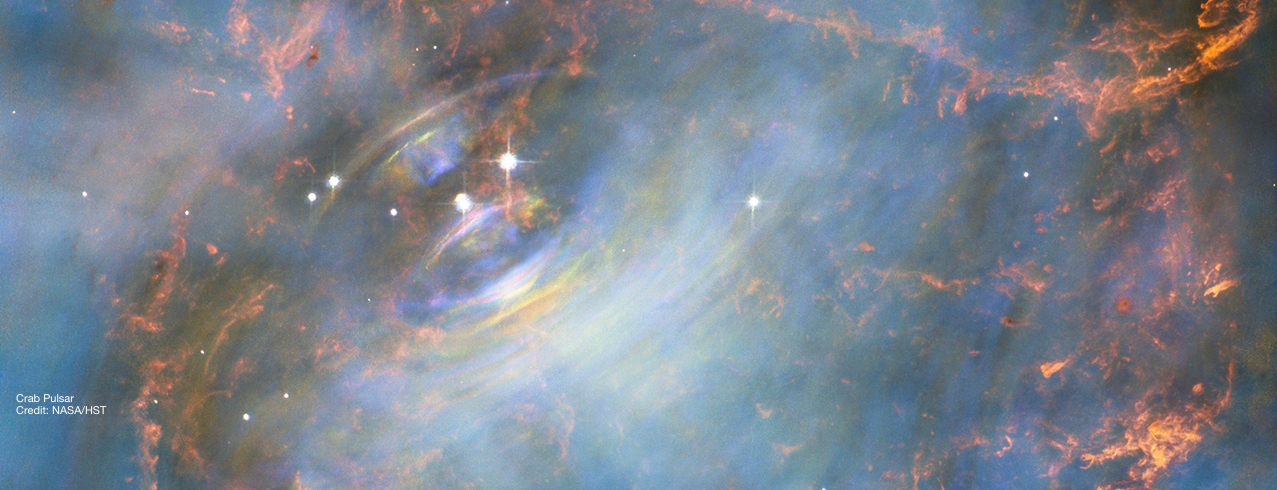
Stella Koch Ocker
astrophysicist (she/her/hers)
I am a Brinson Prize Postdoctoral Fellow at Caltech & Carnegie Observatories. My research is motivated by the rapidly approaching era in which widefield radio surveys (e.g., DSA-2000, CHORD, & SKA)
will detect 1000s of new radio pulsars and fast radio bursts (FRBs). My work uses pulsars, FRBs, and complementary multi-wavelength observations to unveil the distribution and dynamics of ionized gas
both in our Galaxy and beyond. I am a member of the NANOGrav Collaboration and the DSA-110 science team, as well as the pulsar working groups of both SKA and DSA-2000.
Click here to see my CV
Click here to see my ADS record
Research Highlights
For the 3D ISM visualization featured in Ocker et al. (2024a), click here.
Lead Author
- Microphysics of Circumgalactic Turbulence Probed by Fast Radio Bursts and Pulsars. ApJ (2025).
- Probing the Low-Velocity Regime of Non-Radiative Shocks with Neutron Star Bow Shocks. ApJL (2024).
- Implications for Galactic Electron Density Structure from Pulsar Sightlines Intersecting HII Regions. ApJ (2024).
- NE2001p: A Native Python Implementation of the NE2001 Galactic Electron Density Model. RNAAS (2024)
- Pulsar Scintillation through Thick and Thin: Bow Shocks, Bubbles, and the Broader Interstellar Medium. MNRAS (2024)
- Scattering Variability Detected from the Circumsource Medium of FRB 20190520B. MNRAS (2023)
- Heliosphere Meets Interstellar Medium, in a Galactic Context. White paper submitted to the National Academies Heliophysics 2024 Decadal Survey (2022)
- Radio Scattering Horizons for Galactic and Extragalactic Transients. ApJ (2022)
- The Large Dispersion and Scattering of FRB 20190520B are Dominated by the Host Galaxy. ApJ (2022)
- An In Situ Study of Turbulence Near Stellar Bow Shocks. ApJ (2021)
- Persistent Plasma Waves in Interstellar Space Detected By Voyager 1. Nature Astronomy (2021)
- Constraining Galaxy Halos from the Dispersion and Scattering of Fast Radio Bursts and Pulsars. ApJ (2021)
- Electron Density Structure of the Local Galactic Disk. ApJ (2020)
Contributing Author
For a complete list, please see my CV above.
- A Gas Rich Cosmic Web Revealed by Partitioning the Missing Baryons. Nature Astronomy (2025).
- Bow Shock and Local Bubble Plasma Unveiled by the Scintillating Millisecond Pulsar J0437-4715. Nature Astronomy (2025)
- Preferential Occurrence of Fast Radio Bursts in Massive Star-forming Galaxies. Nature (2024).
- The NANOGrav 15-year Data Set: Evidence for a Gravitational Wave Background. ApJL (2023)
- The NANOGrav 15-year Data Set: Observations and Timing of 68 Millisecond Pulsars. ApJL (2023)
- The NANOGrav 15-year Data Set: Detector Characterization and Noise Budget. ApJL (2023)
- The NANOGrav 15-year Data Set: Search for Signals from New Physics. ApJL (2023)
- Magnetic Field Reversal in the Turbulent Environment Around a Repeating Fast Radio Burst. Science (2023)
- A Scintillation Arc Survey of 22 Pulsars with Low to Moderate Dispersion Measures. ApJ (2022)
- A Repeating Fast Radio Burst Associated with a Compact Persistent Radio Source. Nature (2022)
- Redshift Estimation and Constraints on Intergalactic and Interstellar Media from Dispersion and Scattering of Fast Radio Bursts. ApJ (2022)
Media & Outreach Highlights
- Astro on Tap: "Fast Radio Bursts"
- NPR: "If NASA greenlights this interstellar mission it could last 100 years"
- Vice News/Motherboard: "Flying 14.5 billion miles away from Earth"
- The top phys.org articles of 2021: "In the emptiness of space, Voyager 1 detects plasma 'hum'"
- Curious About Astronomy? Ask an Astronomer
